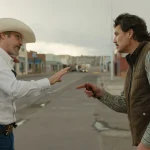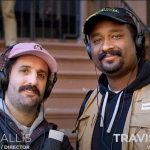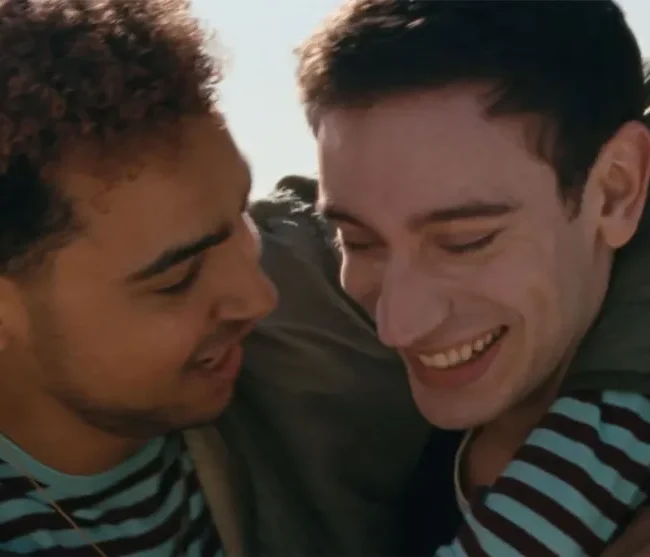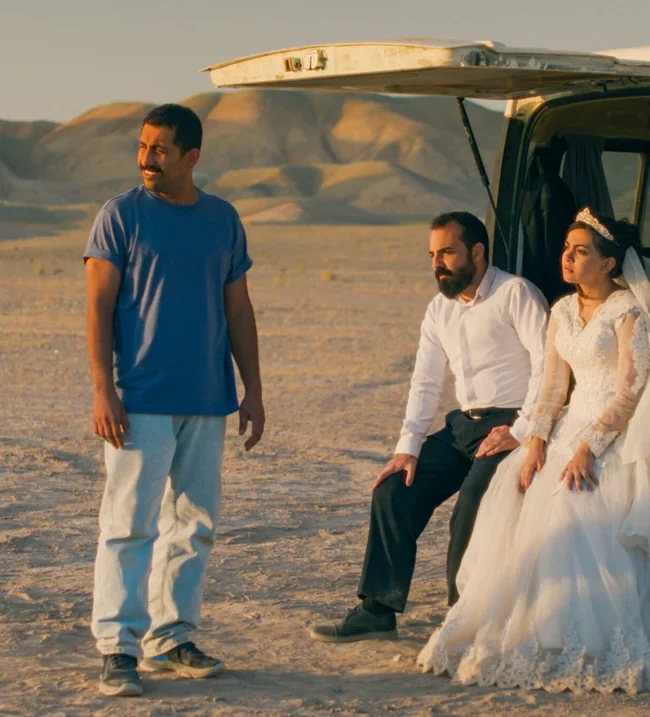A Conversation with Rodrigo Moreno (THE DELINQUENTS)
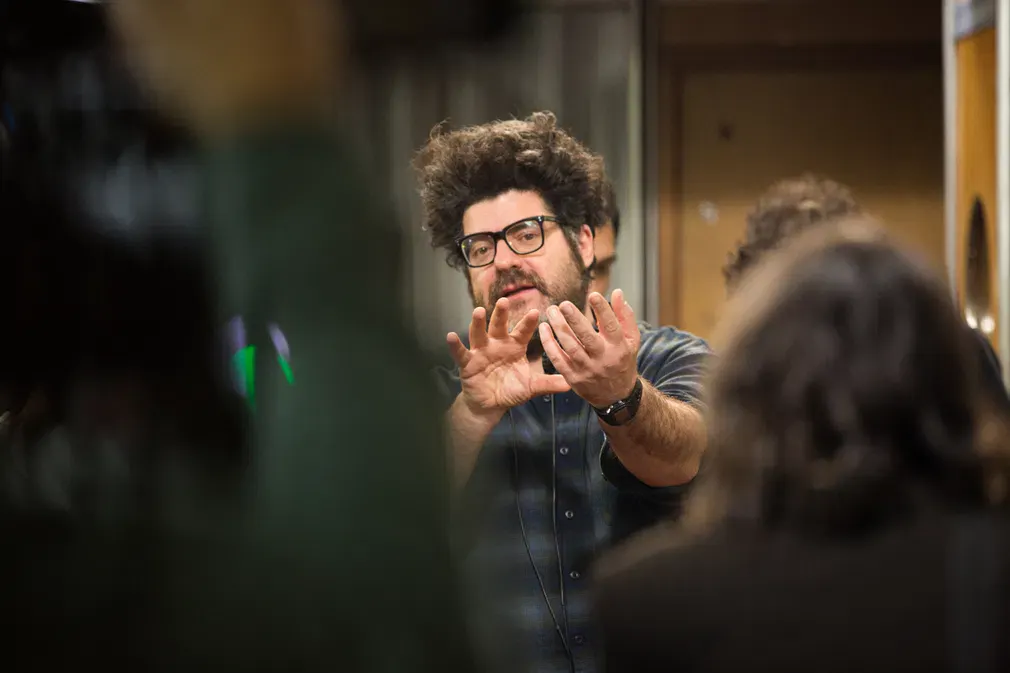
The Delinquents is an unconventional anti-heist film, in which the heist is perpetrated in the first 10 minutes by a disillusioned man (Daniel Eliás) who works at the bank. His plan is simple; walk out with a backpack full of cash, ask his coworker (Esteban Bigliardi) to hide the money, turn himself in, and split the money when he gets out of jail 3 years later. Turns out a lot can happen in 3 years, and across the span of the film’s three-hour runtime, including a free-spirited lover that both men encounter in their journey to stash the stolen dough. Many stylistic flourishes such as the use of mirrors, old tango music, and flashbacks elevate the film above its genre counterparts. Argentina has selected The Delinquents as their submission for the 96th Academy Awards, and the film’s merits along with Mubi’s backing give it a good shot at getting nominated.
Hammer to Nail got a chance to speak with director Rodrigo Moreno after its New York Film Festival premiere. The below conversation has been edited for length and clarity.
HTN: Heist movies usually fall into 2 categories. Ones where they get away with it (Ocean’s Eleven, Inside Man) and ones where it goes horribly wrong (Dog Day Afternoon, Hell or High Water). The Delinquents doesn’t really fit into either category. How do you see it?
Rodrigo Moreno: In reality, when I originally thought of a heist movie, it was going to fall into the first category. And I still think it does. But the success doesn’t have to do with money, rather them learning towards something else. This is the existential idea of the film.
HTN: I really liked the cinematography (by Alejo Maglio), and specifically your use of mirrors. Does that connect with the themes of The Delinquents?
RM: Yes the narrative structure is all about mirrors between characters. The split-screen scene is like a mirror when Morán is in jail. It is absolutely synchronized, they are using the same lighter at the same time. In other scenes, the mirror is not clear and so it kind of deforms their reflection. The idea of a mirror or duplication is built into the architecture of the narrative of the film.
HTN: I also enjoyed the score. It felt old-fashioned. How did the score come about?
RM: The score is evoking something cinematic, something that comes from some traditions in cinema. I don’t like the way nowadays music scores are used in films, it’s so predictable. The music score in the classic period and during modernism–where they revisited the classic period–they used different colors, different instruments. It’s more playful and more sophisticated. I wanted to bring this from the past. I decided not to call a musician to compose an original score for this film, but to use pre-existing music. So I found a piece composed by Astor Piazollo who is known as a master of the bandoneon–which is like an accordion but different, it uses a keyboard instead of buttons–but this piece was not well known, it was composed only for a boy, and it does not use the bandoneon, which is very peculiar for his work. It was nice for me to have different music from Astor Piazzolla in the first part of the film. And for the second part, it was French impressionist musicians like Francis Poulenc.
HTN: That is impressive that it’s all pre-existing music because it does fit so well.
RM: It was never planned. That’s the way I like to work, put many things together and then you see. It can match or not.
HTN: One thing about this movie is that it’s so matter-of-fact, and focuses on the realities of what happens after a heist. Right after Román stashes the money under that big rock, naturally there will be other people in the park, and they convince him to stay for lunch. I feel like I wouldn’t see that in a normal heist movie.
RM: It’s good what you ask. It has to do with being a heist movie. You’re always waiting for some tension. The spectator is going to expect tricks. I want to get rid of the tricks. The film gives you back something light and more human than if something had gone wrong. There is no betrayal.
HTN: When did it come up in your screenwriting process that you decided the two men would interact with the same foursome? And fall for the same girl, Norma (Margarita Molfino).
RM: From the very beginning. The change was how to order those sequences.
HTN: To make it more of a surprise?
RM: Yes because in the script I wrote it chronologically. But there was a lack of grace. You saw Morán meet Norma, and then Román meet Norma, and it was like, “Ok, so what?” But during the editing I discovered this thing, what if the meeting between Morán and Norma is a flashback. That was very crucial for the storytelling, for the structure.
HTN: Is that rare for such a crucial change to happen in the edit room?
RM: It was the first time that happened to me, but I’ve read many stories about how things changed in the editing (on other films).
HTN: I laughed when the boss at the bank says he’s “been working here 55 years” and they ask ‘How old are you?’ and he says “It’s a manner of speech.”
RM: Regarding that line, I wrote it one hour before shooting. I don’t like to improvise with the actors, but I like to leave space for creation during the shooting. I hate improvisation because actors are not writers. But I need to have space enough during the shooting to still create, still modify, or re-write lines. We were reading that scene with all the actors, and I said, “What if you ask him how old he is?”
HTN: Was the line originally 25 years and you upped it to 55?
RM: Yeah.
HTN: Going back to the ambiguous ending. Do you think Morán finds his stolen treasure?
RM: To be honest I don’t care about that. The film ends before. If I were to speculate, I would say that Morán doesn’t care about the money. He realizes he can live without it.
HTN: I thought he was going to meet Román, who was camping out?
RM: In my version, he is just riding a horse in the middle of nowhere.
HTN: I’m glad I asked.
The Delinquents opens in New York City on October 18 and expands to Los Angeles, Chicago, San Francisco, and more cities on October 27.

